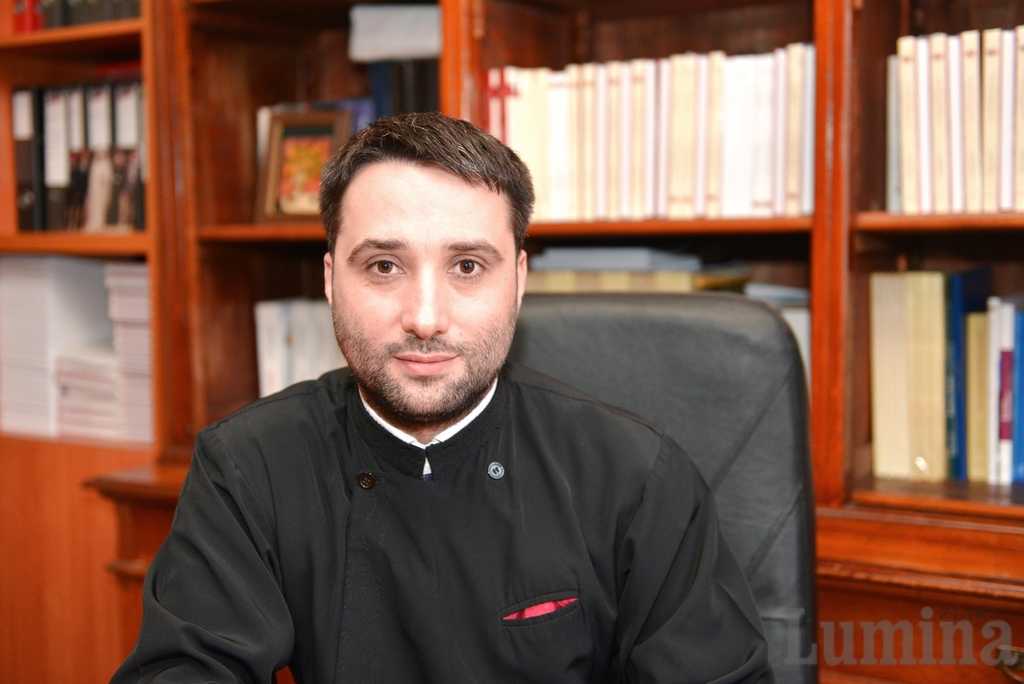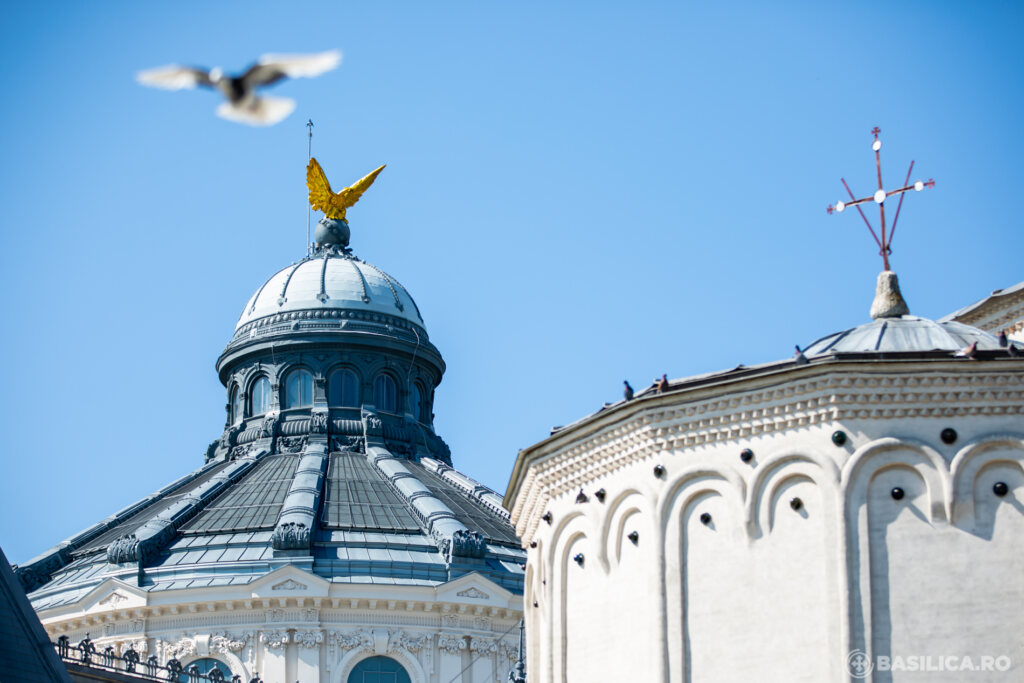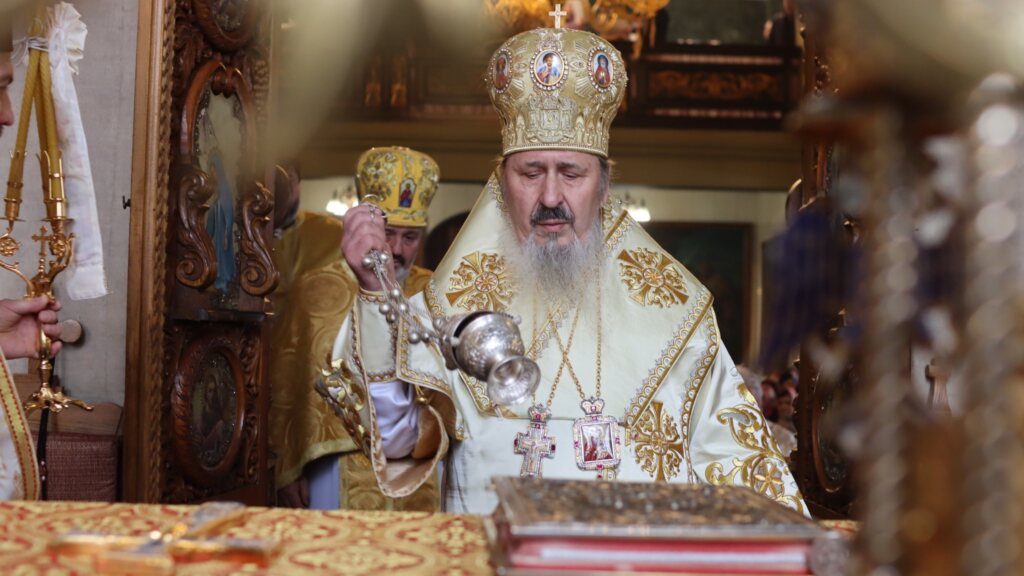Document presented by Rev. dr. Florin Marica, patriarchal counsellor, during the opening session of the International Congress of Theology Religious Education of Youth in the context of today’s secularization (Bucharest, 3-7 September 2016):
In the context of year 2016, declared by the Holy Synod of the Romanian Orthodox Church the Year Dedicated to the Religious Education of the Orthodox Christian Youth, the Archdiocese of Bucharest and the Romanian Patriarchate have organized the Meeting of the Orthodox Youth From All Over the World, in Bucharest between 1-4 September 2016.
The topic of the meeting was: Jesus Christ – the Joy of Life, and its goal: forming the youth by means of the educational, spiritual, cultural and artistic programs they attended in Bucharest, so that in their turn they can become formators in their own communities. Among the specific objectives, we mention: a more profound understanding of the notion of joy, from the perspective of the encounter with Christ; promoting the Christian family values and the pro-life attitude; stressing the importance of integral education; promoting volunteering among the young.
According to Meeting’s concept, approved by the Holy Synod of the Romanian Orthodox Church (theme no. 235/2016), the event was attended by 2,500 young Orthodox from all over the world, aged between 16 and 35, leading the youth activities in parishes, and having at least two years’ experience with parish structures.
The festive opening took place on the evening of Thursday, 1 September 2016; on Friday and Saturday, the young participants attended the morning prayers in ten churches of the Capital, then two workshops conducted in ten schools of Bucharest. On the evening of Friday, 2 September, Palace Hall (Sala Palatului) hosted the conference Jesus Christ – the Joy of Life, where the young participants posed the lecturers (deacon Sorin Mihalache and Mrs. Liana Stanciu) a number of questions revealing the young generation’s concerns and searches for authentically Christian life. The conference was followed by a procession of lights, via Palace Hall/Sala Palatului – Victory Avenue/Calea Victoriei – United Nations Square/Piața Națiunile Unite – Metropolitan Hill/Dealul Mitropoliei, and around 2,000 young people of Bucharest joined the 2,500 participants in the meeting. On the evening of Saturday, 3 September, a music concert took place in „Alexandru Ioan Cuza” Park. The meeting concluded with the first Holy Liturgy celebrated on the construction site of the Cathedral of National Salvation, on Sunday, 4 September 2016.
As the constantly changing contemporary society renders the needs of the young increasingly manifold, the workshops conducted during the meeting provided an adequate framework, whereby the young participants identified specific problems of their generation and suggested possible solutions. Thus, the young attendants – divided into 100 work groups – had the opportunity to engage in dialogue and express their views on: 1. The presence and importance of young persons in the Church, and 2. The needs of the young and the answers provided by the Church.
To engage all participants in the two workshops, a specific environment was created, with small work teams (maximum five persons), each group sitting around a table. Four work points were set in every room, with the team head remaining in position and the other participants moving around, so that for 15-minute intervals, each team adressed the topic under discussion, taking over the information from the previous group. The person remaining at the work point presented the conclusions of the debate, and each facilitator volunteer recorded the main ideas in a document.
To gain the necessary abilities for such workshops, prior to the event 100 facilitator volunteers attended several training sessions. The role of these volunteers was important, since after the workshops were completed, each volunteer drafted a document providing a systematic presentation of the conclusions drawn by the young attendants. The documents were submitted to the Theological-Educational Sector of the Patriarchal Administration.
The following conclusions were drawn from the reports made by facilitator volunteers, after these documents were collected and analyzed .
- The first workshop: The presence and importance of youth within the Church, included the following subtopics: a. Organization and work with the young in the Church: NGO or/and catechism group? b. Which activities should the Church organize, prompt or host, in order to get young people more involved in parish life? c. Vice, addictions, prejudice and taboos (addiction to drugs, alcohol, pornography, negative stereotypes concerning the Church, etc.) – is the Church an answer? How? d. Youth meetings in small chapels and large cathedrals – What is essential for the joy of such encounters?
For each of these sub-topics, the young participants identified the following solutions:
a. Organization and work with the young in the Church: NGO or/and catechism group?
- Every parish should have at least one catechism group to work with children/young people; if there is a larger group of young persons, and community resources can support such initiative, the young may establish an association to facilitate the devising and implementing of projects at local or regional level;
- Regardless of the manner in which the young are organized, it is important that they should be actively involved in the life of their communities, because activities carried out in an informal environment encourage personal development;
- Organizing youth activities in local communities provides a healthy, beneficial alternative way of spending their free time.
b. Which activities should the Church organize, prompt or host, in order to get young people more involved in parish life?
- It is necessary that the Church develops projects with local impact, to meet the needs of the young, according to their age and the specific character of the community starting them; projects may include the following activities:
- catecheses, dialogues and conferences on matters of spirituality;
- workshops: painting/sculpture (with exhibitions), culinary art (with agape meals), traditional crafts (weaving, sewing, egg decorating), music (carols, hymns, etc.);
- seminars: team-building, personal development, education (foreign languages, health care);
- thematic (e.g. historical, cultural) trips;
- camps (film, photography, music, etc.);
- summer schools;
- cinema evenings, followed by thematic dialogues;
- parish journals and bulletins written by the young;
- charity activities: visiting and sustaining underprivileged groups, promoting volunteering, charity concerts, free tuition for underprivileged children, training underprivileged young persons for particular professions;
- services for the young: the Holy Liturgy, akathist and paraklesis services, etc.;
- ecology activities;
- information/experience exchange between parishes, assemblies, national and international meetings;
- priests present in schools for dialogue with the young and for the Holy Mystery of Confession;
- maintenance of churches, historical monuments, parish cemeteries;
- sport events and contests, trips, etc.
c. Vice, addictions, prejudice and taboos (adiction to drugs, alcohol, pornography, negative stereotypes concerning the Church, etc.) – is the Church an answer? How?
- The Church condemns the vice (sin), not the person. People must be helped to break the vicious circle they fiind themselves on, and this can be achieved in the Church. Where people facing trouble fail to turn to the Church for support, the young together with other community members should lend a helping hand;
- The Church fights against vice, addictions, prejudice and taboos, through the following actions:
- Promoting a healthy lifestyle, in harmony with the fellow people;
- Organizing meetings with the young, informing them on the consequences of vice and addictions;
- Creating support groups including young parishioners, priests, psychologists, physicians, etc., to raise young people’s awareness of the negative effects of vices;
- Counselling offered to addicted persons through the Holy Mystery of Confession;
- Promoting authentic role models for the young (people who used to be sinners, but radically changed their lives and became saints);
- Promoting moral values and the persons who had the determination to overcome vices;
- Taking stance against pornographic materials, through petitions;
- Negative stereotypes against the Church can be disproved by:
- Promoting the charity, cultural, artistic, ecologic activities carried out by the Church;
- Increasing the number of camps and training courses offered to the youth.
d. Youth meetings in small chapels and large cathedrals – What is essential for the joy of such encounters?
- Any youth meeting within the Church, regardless of venue (chapel, parish church or cathedral) is actually an encounter with God; what is important is the goal of this meeting;
- Youth meetings within the Church must promote: mutual trust, dialogue, respect, prayer, cooperation, unity, togetherness; the joy of encounter is important, as is the support provided to those who are suffering;
- Diversity of characters and interests results in identifying a leader within each community; the leader must constantly animate the youth meetings with love and sincerity.
2. The second workshop: The needs of the young and the answers provided by the Church, included the following subtopics: a. The Christian family – a profile of the Christian family in today’s society; the approach of the young on Christian family b. Health education – adequate ways in addressing health education; c. The Religion class – expectations, suggestions for improvement, innovative approaches; d. (Self)discovery, (self)definition and friendship within the Church – a place for communication and communion among the young.
- The Christian family – a profile of the Christian family in today’s society; the approach of the young on Christian family:
- The young are aware of the vulnerability and challenges faced by traditional family, asserting that a Christian family must be defined by a number of keywords: respect, understanding, faith, fidelity, compassion, self-giving, (unconditional) love, communion, family as the „church at home”;
- The Church provides the proper framework where the Christian family can safeguard its spiritual identity against secularization and globalization;
- Through greater social involvement, the Church must provide healthy alternatives for family life, by programs such as Parents’ School, forming the young parishioners who have become parents.
a. Health education – adequate ways in addressing health education:
- The young are aware of the tendency to lend a sexualized character to the concept of „health education”, a topic intensely debated in the Romanian public arena;
The main responsibility in this sense belongs with the family (parents);
- The young do not want this subject to be included in the mandatory school curriculum; it could exist as extracurricular activity, designed with the contribution of Family, Church and competent medical staff;
- Information provided on these aspects must take into account both children’s innocence, and the need to present the risks involved by premature or extramarital sexual life.
b. The Religion class – expectations, suggestions for improvement, innovative approaches:
- The young perceive the Religion class as a space of sincerity and openness, where they improve the knowledge already acquired in the family and where, in a relaxing atmosphere, they come to know God with the assistance of their Religion teacher;
- It is important to establish Religion rooms with the support of the pupils; they will take active part in the maintenance of these rooms, and the didactic materials will be permanently updated;
- with a view to an innovative approach and improving the quality of Religion classes, the young pointed out the need for:
- an informal approach to the Religion class;
- teamwork and „on-site” research into the religious matters (in direct contact with religious practice);
- employing multimedia in teaching;
- starting social-philanthropy activities at local level, with the assistance of the Religion teacher, etc.;
- the importance of organizing thematic trips.
c. (Self)discovery, (self)definition and friendship within the Church – a place for communication and communion among the young.
- Through youth activities, supported by the priest and the community, the Church can develop a space where the young rally around Christian ideals, so that the Orthodox identity is assumed and expressed at community level.
All those who attended the workshops were highly satisfied with their format, the topics proposed and the manner of work. Most of them stated that they had discovered new abilities during the debates, that they had felt important and had the feeling that their opinions mattered. They unanimously desire that their proposals should be put into practice.
We quote the words of two young participants: „Reflection on the subtopics proposed, has determined the participants conclude that they ought to become more involved in the activities carried out by the Church”; „The Orthodox youth wants to be active, has valuable ideas for boosting Orthodoxy within the community, and needs support from those who have the necessary authority to put these ideas into practice”.
The conclusions hereby submitted to your attention within the International Congress of Theology Religious Education of the Youth in the context of today’s secularization demonstrate the enthusiasm, dedication and responsiveness of the young participating in the Meeting of the Orthodox Youth From All Over the World, held in Bucharest between 1-4 September 2016, their willingness be be actively involved in Church life, as well as the necessity to continue such events.






